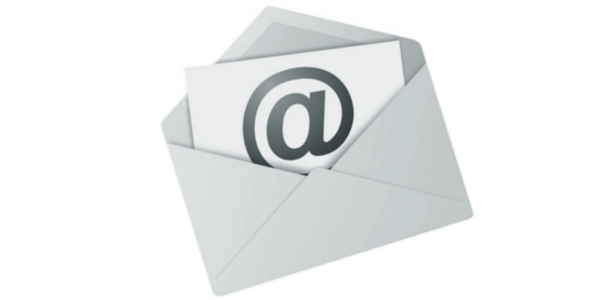Marketing is an important part of any business! Without it, you will struggle to build brand identity, drive traffic to your business and ultimately sell your products/services to your customers. For this reason, it’s vitally important that you make the most of the marketing that you invest in to get the most out of it. This is where ROI (Return On Investment) comes in.
We take a look at 3 types of marketing that you can use; email marketing, social media and direct mail (snail mail) and see how you can get the most out of it.
ROI for Email Marketing
Email marketing is the direct descendant of the old pre-Internet technique of mail order marketing and as a part of the online marketing landscape; it takes up an enormous part of the picture. Here are several tips for email marketing ROI maximization.
1. Target your Niche as Narrowly as Possible
Without a doubt the single most important step to boosting ROI in your email marketing campaigns lies in narrowing the niche down carefully – this step will also apply to social media and snail mail. In the earlier days of email marketing, many sellers tried to engage in vaguely spam-like practices by buying or collecting enormous lists of random email addresses off the internet and mass mailing their sales offers to them. Not only is this now often illegal, it was also highly ineffective. It works even less now with more sophisticated spam filters in most email clients.
Instead, target your niche as carefully as possible through online promotion to people who actually visit your web page and sign up via email address to receive what you might be sending. This is called email list building, and it will carry the highest possible sales conversion rates, especially if you finely narrow it down to the most likely buyers.
2. Offer a Valuable Free Bonus
If you’re engaging in email marketing, you need to keep two things in mind:
- Your audience is almost certainly being wooed by a competitor with a somewhat similar product.
- Your audience is looking for a reason to trust you enough to be interested in buying.
You can solve both problems by offering a high quality free report or bonus product of some kind to anyone who subscribes. Do this before looking for sales; think of it as a “help now, sell later” principle.
3. Clean your Lists Regularly
Your email lists are valuable and maintaining them costs next to nothing, but sending out messages gets billed per message by most email marketing software systems and sending to a large list of people who never shows interest in your offers according to your email marketing software’s stats is one more expense you don’t really need to have. On a bimonthly basis or even a monthly basis, check your mailing software’s statistics and get rid of any subscribers who haven’t opened one of your messages in several weeks to a couple of months.
Social Media Marketing ROI
Unless you’re using PPC ads offered by social networks like Facebook, the biggest cost of most organic social media marketing is time. It takes lots of time to build a social promotion campaign and it takes lots of time to get it spread amongst enough people to be effective. Unless you get lucky with a sudden viral surge in your efforts, you’ll probably spend hours per day for several months creating something truly strong enough to create a large ROI.
However, time is money for you as an online entrepreneur, so your social media marketing most certainly does have a certain cost and you want to create the maximum impact per hour spent on it.
1. Market to the Lowest Common Denominator
This means keep it simple! Social media is mostly made up of people who aren’t specifically looking for what you’re offering as is the case with search engine ads, instead they’re just browsing, reading posts, looking around at several random attention grabbers at any given time. Thus, you have to keep your ads as simple and eye catching as possible to latch on to this attention as quickly and effectively as possible. Complex ads or posts on social media might grab the attention of a small number of people but simple eye catching ads will catch everyone’s attention, at least for a moment; this moment is what will increase your ROI by giving you a better click through margin that could later lead to sales.
2. Define a Measurement Strategy
Since social media marketing isn’t normally measured in dollars spent like search engine and other PPC advertising is, it’s easy to lose track of keeping a comprehensive and precise system of metrics that measure your returns.
Don’t do this. Create an analysis system that keeps careful track of what you get back from social media promotion in relation to what you put into it. An excellent example of a social media metrics system could be measuring, in separate categories, your new monthly followers, linkbacks to your website, sales that came from these, social mentions by third parties and shares of your content. Compare them and the dollar amounts they generate to your number of hours spent working on campaigns on a monthly basis.
3. Connect to People with Influence
Your entire social media campaign has to be about sharing quality content that people want to click on and share; it can’t just be a standard issue advertising campaign because these don’t work very well in social media platforms. Because of this, you need to focus on creating the kind of shared content and social pages that help and engage those in your niche. If you can do this, connect or offer your materials to others who already have more pull and recognition amongst your target audience inside the social networks. Pulling this off can create an incredible ROI boost for much less work.
For example, if you own a website that sells musical equipment, either create valuable information about the subject and offer to share it on a rock band’s social page, or offer a well-known band a free trial of one of your instruments and ask that they post a review or opinion to their Twitter or Facebook page. Successfully pulling off even one of these two examples in your industry can bring you more attention and sales than weeks of sharing amongst groups of normal followers.
Improving Direct Mail ROI
Direct mail, the predecessor to modern email marketing, is still a very popular means of advertising products and services despite competition from its digital cousin. The reason is simple; for all the internet use that is growing across the world, hundreds of millions of people still pay attention to regular mail.
Since the per mail cost of a direct mail campaign is far more expensive than email marketing messages ever could be, improving ROI and getting the most from your mail advertising is absolutely important to making your efforts profitable. Some of the same rules that work for email apply here.
1. Carefully Target your Audience
Since the cost of each letter mailed out can be dozens of times higher than the cost of an email campaign message, direct mail absolutely requires you to manage the tightest possible campaign that’s aimed straight at the people most likely to buy from you. Many of the niche searching tools that exist on the internet can’t be used with direct mail but you can still do research and buy lists from third party sellers to help you mail out to your most likely buyers for the highest possible conversion rates.
2. Clean your List Periodically
Again we see an email marketing ROI improvement tactic that can be applied to direct mail. In this case, it’s even more important that you keep careful track of your mailing response statistics and periodically strip addresses from your list if they belong to people who haven’t so much as once replied to a single letter in months. Every definitively non-responding name you remove from your mailing list increases the profit per sale slightly.
3. Make your Letters as Personal as Possible
Mail marketing can often seem impersonal and pushy. Counteract this impression by writing and formatting your letters so that readers get the clear impression of being spoken to one on one. They know it’s a mass mailing campaign, but the attentive feeling unconsciously persists if they read a sales letter that seems to be written just for them. This will make them considerably more likely to reply with a follow-up or a possible sale.
4. Include Enticing Offers
Your direct mail campaign should also include special offers that either offer discounts or free bonuses to potential buyers if they hurry to make that purchase. Emphasize the value of your bonus offerings, emphasize the customer savings that your leads will receive and put particular emphasis on the fact that what they will receive is either free or being given away briefly at a deep discount; the idea being to create a sense of hurry.
___________________________________________________________________
Thank you to my Guest Post Author: Robert Woodford
Robert has been covering topics like Reachmail’s email plans online for over a decade. When he isn’t covering email topics, you can find him at home with his family or practising his guitar skills.
___________________________________________________________________





CommentLuv vs Disqus – Why I Don’t Use CommentLuv!